What Tog Duvet for a Child?
Choosing the right tog duvet for your child is crucial to ensure they are comfortable and getting quality rest to grow. If you choose the wrong one, your child might feel cold in their sleep and not be comfortable even when they are covered.
A small infant or child's body temperature can rise quickly, especially when in their cot, because of close contact with the duvet. Not to mention, newborns and toddlers cannot regulate their body temperature, making them more vulnerable to becoming too hot.
Let's find out how to choose what tog duvet for a child is right for your little ones so that they will have a comfortable sleep from now on!
What type of duvet fillings are available?
There are five types of duvet fillings available, including:
Hollowfibre
Hollowfibre is usually used as a filling for lightweight tog duvets but is also used for 13.5 and 15 tog duvets. It is very soft and can trap air within its fibres very effectively, making it comfortable and cosy to sleep under.
Hollowfibre fillings are usually the most affordable option, making these duvets a great choice for those on a budget.
Duck feather and duck down
These two materials come from the bird. Duck feathers come from the outer layer of the wings and back. Duck down is the inner layer of more insulated feathers to keep the duck warm.
They are both very soft and cosy to sleep on. Generally speaking, these fillings provide moderate warmth, which is slightly warmer than hollowfibre.
These two types of fillings can be more expensive than hollowfibre but cheaper than goose feather and goose down filling.
Goose feather and goose down
Duvets made from goose feathers and down are naturally warmer. They provide moderate warmth during summer while providing extra warmth in winter. They require less filling and still supply the same heat insulation because the feathers are much bigger.
These are typically the most expensive duvet fillings. However, they do offer a lot of warmth during winter months.
What are the benefits of each type of duvet filling for children?
Hollowfibre duvet fillings are great for children because they are usually very light and do not weigh the child down when they snuggle into the duvet.
Duck feather and down fillings are highly recommended for children because they are very soft and warm. Duck fillings can sometimes be heavy because of the increased amount of feathers and down needed to fill the duvet.
Goose feather and down fillings are more suitable during winter since these can provide deep warmth to keep your child comfortable and warm during cold seasons.
Child duvets for allergy sufferers
The best children's duvet for allergy sufferers is the Slumberdown Anti-Allergy duvet. It's 100% hollowfibre and is made with an anti-allergy filling that prevents the build-up of dust mites and house dust. It's also warm in the winter, making it perfect for allergy sufferers.
It is suitable for kids who wake up with allergies during the night because there are no feather or down fillings to aggravate their allergies even when they sleep on top of the duvet.
This duvet is available for purchase with a tog rating of up to 13.5 that's suitable for colder nights. The Slumberdown Anti-Allergy duvet can be used throughout the year for those who prefer to be cosy. You will not need to buy separate duvets for every season of the year - one single duvet should do the trick.
Which duvet fillings and togs are best for kids for each season?
One thing to keep in mind is that not all tog duvet fillings will have the same warmth. Although the label might say "duvet tog rating X," that does not mean it's the best option for all seasons. For example, a 13.5 tog duvet will provide excellent warmth in winter but might be too warm in the summer months depending on where you live.
Different fillings have different thermal conductivities that determine how well each type traps air. For example, hollowfibre with lower tog ratings is not suitable for winter because its thermal conductivity (warmth) is very low. It cannot trap warm air, making your child feel cold inside the duvet during wintertime.
Duck feather and down fillings are heavier and easy to compress, allowing the child to generate warmth by themselves inside the duvet.
Goose feather and down fillings are naturally warmer and help trap warm air during cold months of the year while not making your child too hot during summertime.
For children, it is also imperative to choose a suitable size of duvet for their bed. A child's bed is usually smaller than an adult's bed, so you'll need to choose the right size for them.
For example, a single duvet can be used on single-size beds smaller than the standard single bed. Duvets that are not made specifically for children's beds might not fit properly and end up being too loose or too tight after washing. Be sure to pick a suitable size for your child's bed.
What factors can affect what tog your kids need?
The main factors that affect what tog your kid needs are the home's internal temperature and external weather. Let's take a look at how these factors impact the tog rating that your child needs.
Temperature of your house
If your house has poor insulation, it may be easier for internal heat to escape, making children feel colder inside the room. In this case, you will need a higher tog rating duvet for your kids.
The opposite is true if the house has good insulation. If the house has good insulation, you will need a lower tog rating for your children, making it easier to heat up or cool down the bedroom.
If the weather outside is cold, then you will need a high tog duvet to keep your child warm throughout the night. Another factor that could help is adding or removing another blanket on top of the duvet.
Temperature outside your house
From summer to autumn and spring, your kids might not need a high tog duvet. But when winter comes around, they'll likely need a higher tog to stay warm inside the duvet during cold days.
Sometimes autumn and spring weather can be tricky as the days tend to be warmer and the nights colder. Therefore, it's safe to say that a heavier tog duvet may be needed during these times.
If you have a younger infant, then the tog duvet is even more critical for them as babies cannot generate enough warmth themselves to keep themselves warm at night. However, please ensure that you don't use a tog duvet on babies under 12 months.
Tog duvet for children FAQs
What tog duvet should a 4 to 5-year-old have?
From 4 to 5 years old, children can enjoy a 7.5 tog duvet in the winter and a maximum of 4.5 tog duvet in the summer, depending on their personal preference and the temperature outside. The weather and region will play a pivotal role when choosing the right tog rating for your kids’ bedding.
However, it is a good rule of thumb to stay between 4.5 and 7.5 tog duvet for toddlers this age because they tend to overheat. The best solution is to give them extra blankets and cosy pyjamas to help them stay comfortable when the temperature drops.
What tog should a 6 to 7-year-old have?
A 7.5 tog duvet will be perfect for a 6 to 7-year-old in winter and summertime. This also depends on the temperature settings on the thermostat. It works great for children who prefer sleeping in cooler temperatures. Blanket layers work in this case as well and can save you money on buying multiple duvets.
What tog should an 8 to 9-year-old have?
A tog between 10.5 and 13.5 is best for children aged between 8 and 10 years old all year round in the UK. At the same time, their preference will determine if a higher tog duvet works better than having multiple blankets.
What tog duvet should a 10-year-old plus have?
Children 10 years and older would benefit from having a 13.5 tog duvet or higher all seasons duvet.
You can opt for a lower tog in the summer months because of the increased temperature outside. For example, you could use the 4.5 tog duvet in the summer, while you could use the 10.5 tog duvet in the spring and autumn and the 15 tog duvet for the winter. However, keep in mind that it all still depends on the outside climate and the temperatures inside of the home.
Let's say a teenager sleeps in a home that's usually on the warmer side. In that case, they may feel more comfortable using a 4.5 tog duvet with extra blankets instead of the whole 15 tog duvet.
What tog duvet should a child have in winter?
For kids, a winter tog can be a 13.5, 10.5 or 7.5 tog duvet with extra blankets depending on their age. It will keep them warm during the chilly months, and they’ll be able to sleep well throughout the night without waking up because of cold conditions.
How many winter duvets are needed in the UK?
The number of winter duvets you need depends on what type of duvet you have and how many beds are in the house. For example, if your child has an all seasons duvet, they may not need another.
One of the most popular duvet togs used in the UK during winter is a 13.5 tog duvet as they keep children warm throughout the chilly outside temperatures. However, there are other options to consider depending on your child's age. If your child is younger, they may be better suited to a 7.5 tog duvet rather than a 13.5 tog duvet.
What duvet tog is needed for summer in the UK?
Most people decide to use a lighter 4.5 tog duvet for the summertime because it is easier to regulate the child's body temperature and keep them comfortable. If you have windows open or are using fans, you can opt to use blankets that help regulate body temperature and keep your child's tog at the desired level.
Should I get a 10.5 or 13.5 tog duvet?
A rule of thumb when choosing the right duvet is that the higher the tog rating, the warmer the duvet will be. If you are looking to stay cool and comfortable, a tog between 4.5 and 7.5 is ideal for the spring and summer.
10.5 to 13.5 togs are best for autumn and winter, on the other hand. There are also all-season duvets with the versatility to keep you comfortable all year long.
How do I know what tog duvet to buy?
Many factors influence what tog your children need, such as the internal home temperature, external weather, season, and personal preference. You can go higher or lower in tog depending on if you need extra warmth or cosiness.
What tog duvet do hotels use?
Hotels almost always use a 10.5 tog duvet to provide warmth without making it too hot for guests. This also helps to reduce heating bills throughout the year.
Wrapping up
A tog duvet is a great way to help children sleep warm and comfortable all year long. However, keep in mind that children under one year of age should not use a tog duvet.
Using an all-season tog duvet is excellent to provide warmth without making it too hot for your children. It is essential to consider the child's personal preference as some may love being cosy while others prefer to sleep in a cooler environment.
Overall, even though the tog system may seem confusing or difficult for some, it is really simple and will help children stay comfortable all year round.
Shop a wide range of duvets from Sleepseeker with various tog ratings and sizes available from some of the UK's biggest bedding brands. We offer everything from summer duvets and luxury duvets to feather duvets and other types of bedding like pillows and mattress toppers.
What's trending now...
-
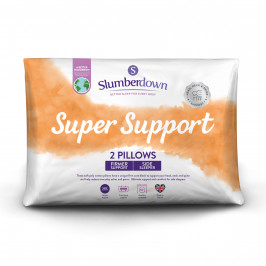
Slumberdown Super Support Firm Support Side Sleeper Pillow, 2 Pack
£17.00
Shop Now -
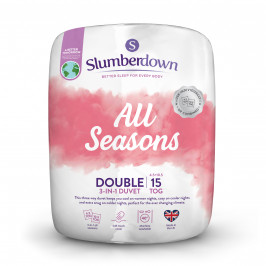
Slumberdown All Seasons Combi 15 Tog (10.5 + 4.5 Tog) Double Duvet
£30.50
Shop Now -
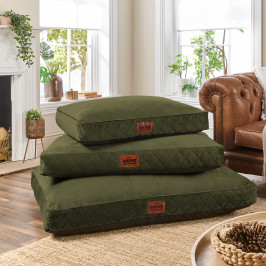
Slumberdown Paws for Slumber Olive Green Pet bed, Medium
£39.00
Shop Now -
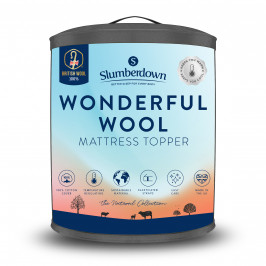
Slumberdown Wonderful Wool Mattress Topper
From: £54.50
Shop Now -
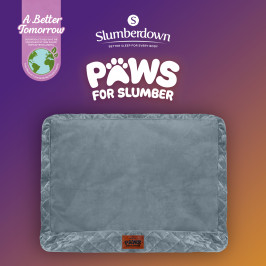
Slumberdown Paws for Slumber Extra Large Pet Bed Spare Cover, Grey
£20.00
Shop Now -
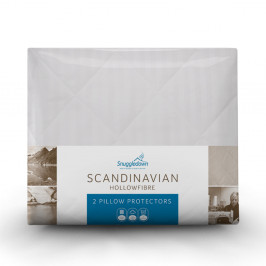
Snuggledown Scandinavian Hollowfibre Pillow Protector - Pack of 2
£15.00
Shop Now -
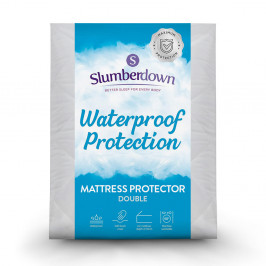
Slumberdown Waterproof Mattress Protector - Double
£17.50
Shop Now -
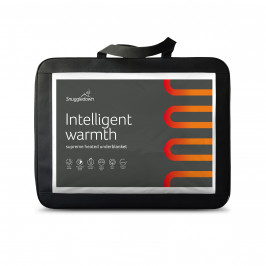
Snuggledown Intelligent Warmth Heated Topper - King
£125.00
Shop Now -
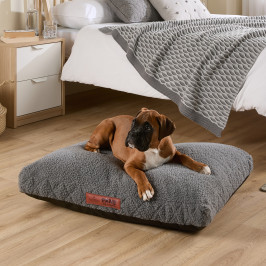
Slumberdown Paws For Slumber Sherpa Pet Bed, Medium
From: £25.00
Shop Now -
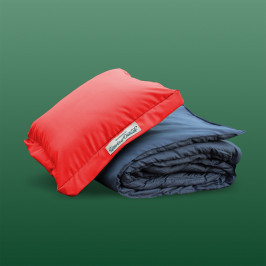
Slumberdown Unwind Outside 2-in-1 Waterproof Cocoon Set, Burnt Orange
£30.00
Shop Now -
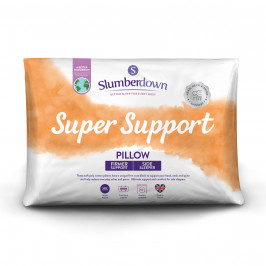
Slumberdown Super Support Firm Support Side Sleeper Pillow
From: £17.00
Shop Now -
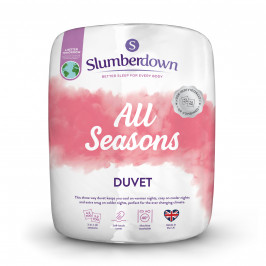
Slumberdown All Seasons Combi Duvet
From: £25.50
Shop Now -
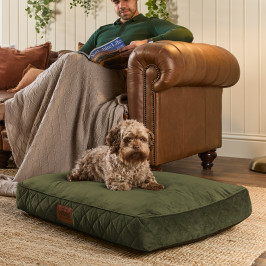
Slumberdown Paws for Slumber Medium Pet Bed
From: £39.00
Shop Now -
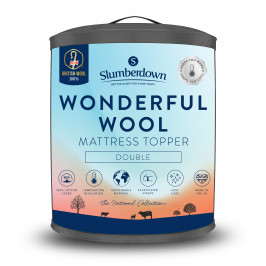
Slumberdown Wonderful Wool Mattress Topper, Double
£54.50
Shop Now -
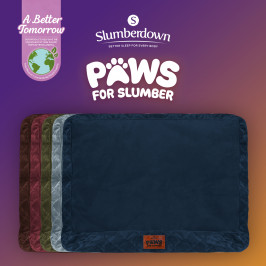
Slumberdown Paws for Slumber Extra Large Pet Bed Spare Cover
From: £20.00
Shop Now -
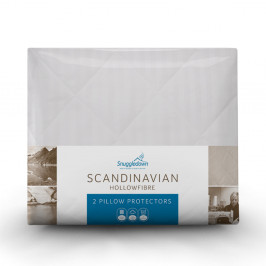
Snuggledown Scandinavian Hollowfibre Pillow Protector
From: £15.00
Shop Now -
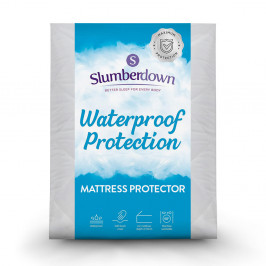
Slumberdown Waterproof Mattress Protector
From: £16.00
Shop Now -
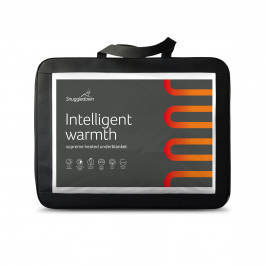
Snuggledown Intelligent Warmth Heated Topper
From: £110.00
Shop Now -
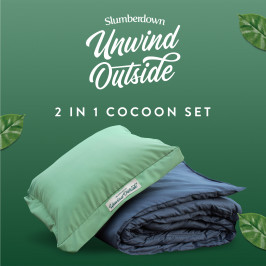
Slumberdown Unwind Outside 2-in-1 Waterproof Cocoon Set
From: £30.00
Shop Now -
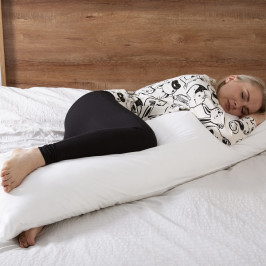
Slumberdown Body Support Pillow, 1 Pack, Includes 100% Cotton Pillow Case
£20.00
Shop Now -
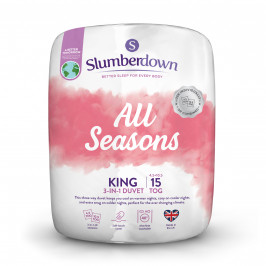
Slumberdown All Seasons Combi 15 Tog (10.5 + 4.5 Tog) King Size Duvet
£34.00
Shop Now




